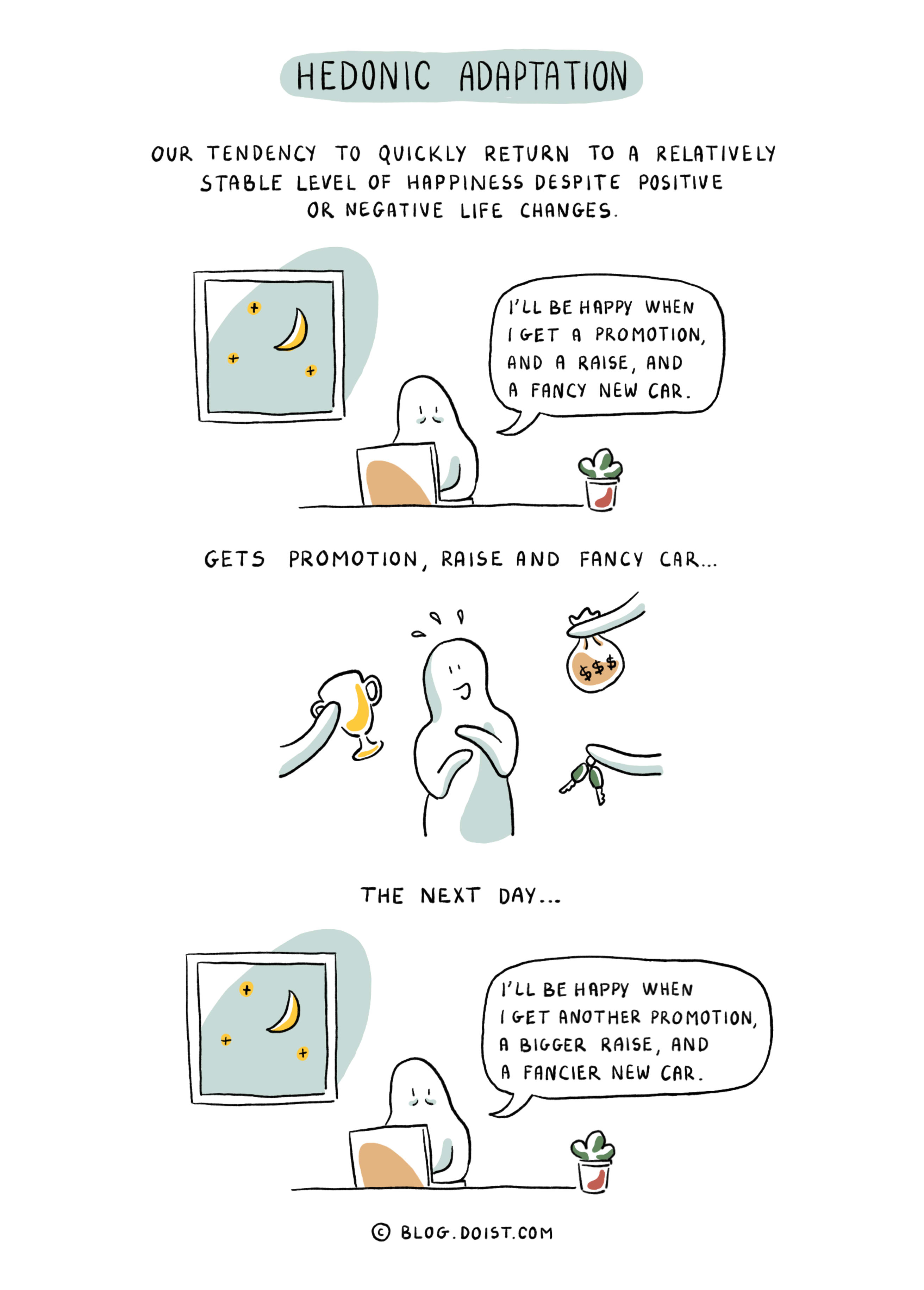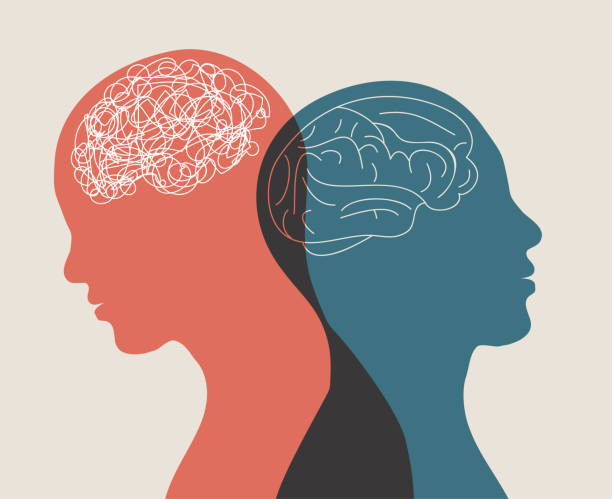Introduction
In today’s fast-paced world, the pursuit of happiness has taken center stage. From social media influencers to self-help gurus, everyone seems to have a formula for achieving bliss. However, many common beliefs about it are rooted in misconceptions rather than science.

Myths About Happiness
There are many myths about happiness, leading to unrealistic expectations and frustration. Common myths include the belief that happiness means avoiding negative emotions, that it can be achieved permanently, or that external factors like wealth and success guarantee it.
In reality, happiness is a dynamic state, influenced by how we navigate life’s ups and downs rather than eliminating challenges. Social media also perpetuates the myth that others are consistently happier, fostering unhealthy comparisons. By debunking these myths and embracing the complexity of happiness, we can approach it more authentically and sustainably.
Read More- Happiness Across Lifespan
Myth 1: Happiness Is the Absence of Negative Emotions
It’s tempting to think that happiness means never feeling sad, angry, or anxious. Yet, research suggests the opposite: experiencing and processing negative emotions is vital for long-term well-being.
Psychologist Susan David, author of Emotional Agility (2016), emphasizes the importance of accepting rather than suppressing negative feelings. Studies show that avoiding negative emotions can lead to greater psychological distress over time (Gross & John, 2003). True happiness involves resilience—navigating life’s ups and downs while maintaining perspective and self-compassion.
Myth 2: Happiness Is a Permanent State
The idea of achieving “everlasting happiness” is enticing but unrealistic. It is not a permanent state; it’s a fluctuating experience influenced by various internal and external factors.
The hedonic adaptation theory explains why even life-changing events—like getting married or earning a promotion—have only temporary effects on happiness (Brickman & Campbell, 1971). Over time, we return to our baseline level of well-being, regardless of positive or negative events. This doesn’t mean it is unattainable; rather, it requires ongoing effort and adaptation.

Myth 3: Money Equals Happiness
While money can improve well-being by addressing basic needs, its impact on happiness diminishes after a certain point. Nobel laureates Daniel Kahneman and Angus Deaton (2010) found that emotional well-being plateaus at an income of around $75,000 per year in the U.S. (adjusted for inflation, this figure may vary by location). Beyond this threshold, additional income has little impact on daily happiness.
However, how you spend money matters. Spending on experiences, personal growth, or helping others has been shown to increase it more than material purchases (Dunn, Gilbert, & Wilson, 2011).
Myth 4: You Can “Think” Your Way to Happiness
Positive thinking is often promoted as the key to happiness, but blind optimism can be counterproductive. A study by Oettingen et al. (2001) found that excessive positive fantasizing can lead to lower effort and poorer outcomes because it tricks the brain into feeling prematurely rewarded.
Instead, a balanced approach—combining optimism with realistic planning—leads to greater satisfaction. This method, known as mental contrasting, involves visualizing your goals while acknowledging potential obstacles.

Myth 5: Social Media Is a Reliable Indicator of Happiness
Scrolling through curated images of vacations, celebrations, and smiling faces can create the illusion that everyone else is happier than you. However, social media often portrays an idealized version of life, which can fuel comparison and reduce self-esteem (Chou & Edge, 2012).
Research suggests that limiting social media use can significantly improve mental health. A study by Hunt et al. (2018) found that reducing time on platforms like Instagram and Facebook led to decreased feelings of loneliness and depression in young adults.
Myth 6: Happiness Comes From Within Alone
While internal factors like mindset and personality play a significant role in happiness, external circumstances are not irrelevant. Relationships, community, and a sense of purpose contribute heavily to well-being.
For example, the Harvard Study of Adult Development—one of the longest-running studies on happiness—found that close relationships are the most significant predictor of life satisfaction and longevity (Waldinger & Schulz, 2010). It is not purely a solo endeavor; it’s deeply tied to connection and shared experiences.
Strategies for Cultivating Happiness
While debunking these myths, it’s important to highlight strategies that actually work-
- Gratitude Practices- Regularly writing down things you’re grateful for has been shown to boost mood and life satisfaction (Emmons & McCullough, 2003).
- Engage in Acts of Kindness- Helping others increases happiness by fostering connection and a sense of purpose (Lyubomirsky, Sheldon, & Schkade, 2005).
- Pursue Intrinsic Goals- Focusing on personal growth, relationships, and health leads to greater well-being than chasing external rewards like money or fame (Kasser & Ryan, 1996).
- Mindfulness and Meditation- Mindfulness practices enhance emotional regulation and reduce stress, contributing to greater overall happiness (Kabat-Zinn, 1990).
Read More- Gratitude Journal
Conclusion
Happiness is not a one-size-fits-all concept or a finish line to cross. It’s a dynamic process influenced by a mix of internal attitudes, external relationships, and life circumstances. By letting go of myths and focusing on evidence-based practices, we can cultivate a deeper, more sustainable sense of well-being.
As psychologist Viktor Frankl wrote in Man’s Search for Meaning (1946), “Happiness cannot be pursued; it must ensue.” It arises not from chasing an ideal but from living with intention, connection, and authenticity.
References
Brickman, P., & Campbell, D. T. (1971). Hedonic relativism and planning the good society. In Adaptation-level theory: A symposium.
Chou, H. T. G., & Edge, N. (2012). “They are happier and having better lives than I am”: The impact of using Facebook on perceptions of others’ lives. Cyberpsychology, Behavior, and Social Networking, 15(2), 117-121.
Dunn, E. W., Gilbert, D. T., & Wilson, T. D. (2011). If money doesn’t make you happy, then you probably aren’t spending it right. Journal of Consumer Psychology, 21(2), 115-125.
Emmons, R. A., & McCullough, M. E. (2003). Counting blessings versus burdens: An experimental investigation of gratitude and subjective well-being in daily life. Journal of Personality and Social Psychology, 84(2), 377-389.
Kahneman, D., & Deaton, A. (2010). High income improves evaluation of life but not emotional well-being. Proceedings of the National Academy of Sciences, 107(38), 16489-16493.
Lyubomirsky, S., Sheldon, K. M., & Schkade, D. (2005). Pursuing happiness: The architecture of sustainable change. Review of General Psychology, 9(2), 111-131.
Waldinger, R. J., & Schulz, M. S. (2010). What’s love got to do with it? Social functioning, perceived health, and daily happiness in married octogenarians. Psychology and Aging, 25(2), 422-431.
Subscribe to PsychUniverse
Get the latest updates and insights.
Join 3,002 other subscribers!
Niwlikar, B. A. (2025, January 24). 6 Popular Myths About Happiness. PsychUniverse. https://psychuniverse.com/6-popular-myths-about-happiness/



